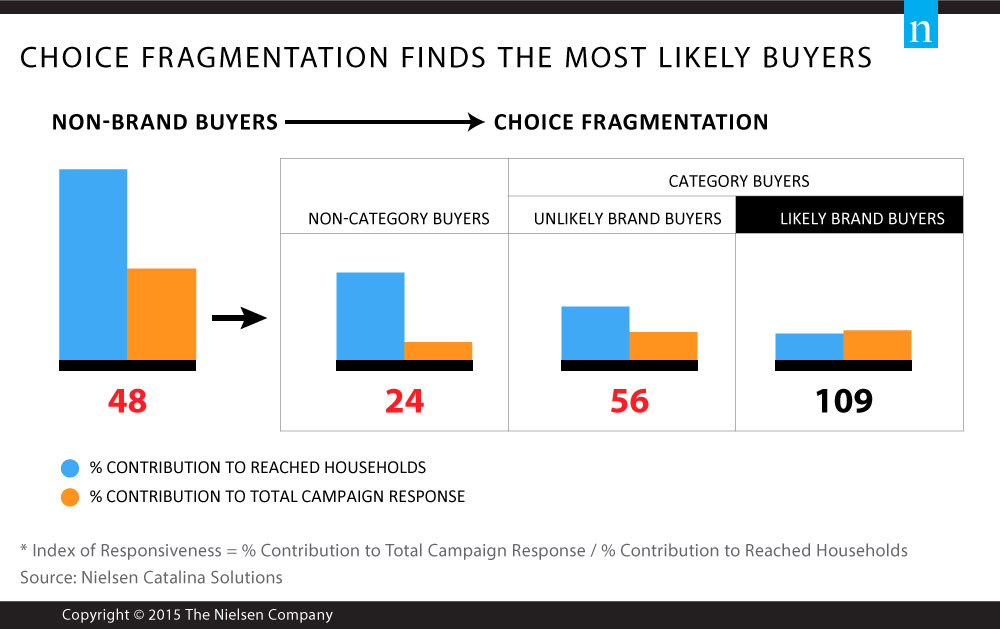For most marketers, there are two types of shoppers: Those who have bought a brand’s product before (buyers) and those who haven’t (non-buyers). Since buyers have already tried a product, marketers can use advertising to encourage additional buying or boost their connection to loyal and engaged customers. On the flip side, advertising can also help convert non-buyers into brand users, potentially driving additional market penetration and sales over the longer term.
However, it’s difficult to convince non-buyers of a specific brand to purchase it—though some are more likely to buy than others. To determine the value of a group of non-buyers, Nielsen Catalina Solutions (NCS) analyzed non-buyers across 13 brands to measure their responsiveness to advertising. NCS found that almost 40% of the non-buying households reached by a campaign delivered less than 20% of the actual incremental sales, which is a responsiveness index of 51. This index of 51 was calculated by dividing the percent of sales lift (20%) by the percent of households reached (40%), where an index of 100 would be average.
In short, this is a very inefficient way for brands to spend their advertising dollars. But what if they knew which people seeing their ads were the ones who were most likely to buy their products? To better understand today’s consumers, NCS used “choice fragmentation” analysis to determine which non-buyers are most likely to buy a product. The analysis uses purchase data to help brands identify the most relevant audiences for their marketing objectives, especially for reaching consumers who are new to a brand.
Given today’s rapidly changing media landscape, companies place notable emphasis on where marketers should be to meet consumers—from TV and radio to online and mobile. But how they identify, define and reach people is also important. Marketers need to consider the data mix available to them and then build the most productive audience segments—based on demographics, geography, lifestyle and purchase habits—to better reach the consumers who will drive the highest sales.
By identifying consumers who have not purchased a brand’s product in the last year and segmenting them into groups that are likely and unlikely to be converted into brand buyers, brands have a much clearer understanding of who to focus on as they plan and execute their ad campaigns. For example, by focusing on the people who are most likely to buy (from current non-buyers), the average responsiveness index across the tested 13 brands jumps from 51 to 149—three times greater lift.

When we apply this method across several categories, we see a wide range of results. But regardless of which case we look at, marketers are able to drive more sales when they use this method to appeal to likely buyers. In the baby care category, for example, the recent study found that “likely brand buyers” are almost four times more likely to purchase than “unlikely brand buyers.” For carbonated soft drinks, the likely brand buyers were almost 10 times more likely to purchase than unlikely brand buyers or non-category buyers.
Choice fragmentation allows marketers to use retail purchase data to help define audience groups that align with their business goals, such as reaching non-buyers who are likely to buy a product they’ve never tried before, and determining which non-buyers have the most sales potential. Furthermore, the ability to reach these segments through television programs and networks with a high concentration of the selected audiences is increasing return on advertising, in turn, changing the face of audience segmentation.



